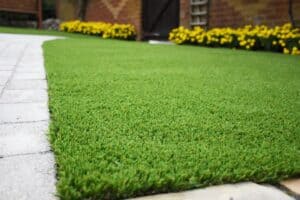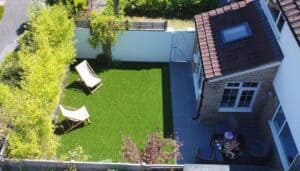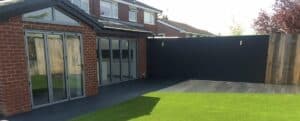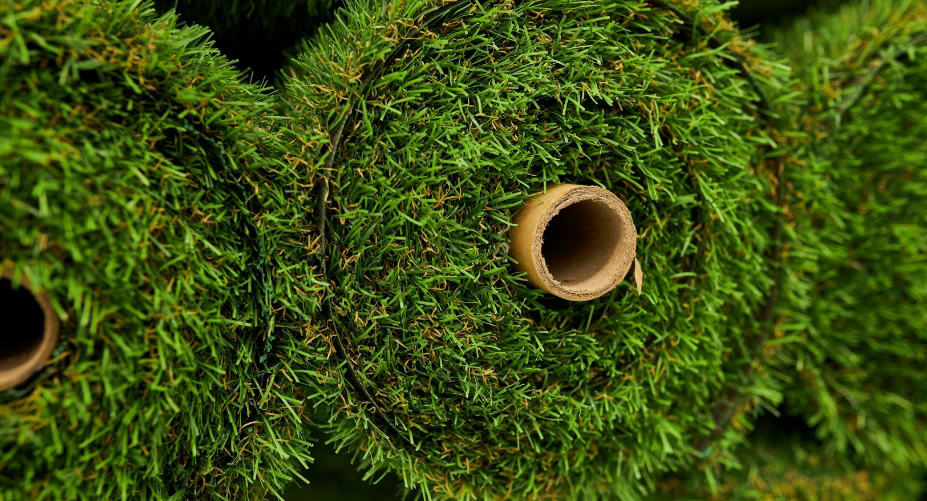How to Encourage Wildlife into your Garden
Your garden can be a haven to relax in and enjoy – but it can also serve as somewhere the local wildlife can feed, breed and shelter. It’s not difficult and it doesn’t mean turning your manicured garden into a compost heap either. Read on to find out ways to make your low maintenance artificial grass work alongside nature to attract more wildlife into your garden.
Bees, butterflies and other insects rely on flowers for pollen and nectar, and the flowers use them for fertilisation – it’s a happy symbiosis. So, if you want to get your garden buzzing, you need to plant some nectar-rich flowers. Choose plants that complement each other, so that you and your new insect-friends can enjoy them all year round. Try planting things that flower in sequence: for instance, Crocus and Mahonia flower from spring, Angelica and Buddleia flower in summer, Chrysanthemum and Ivy in autumn/winter. Together they’ll provide food for insects almost all year round. Likewise, a range of different types of plants – from flowers to shrubs through to trees – means that a variety of animals can live in your garden.
The UK is a very urbanised country, and while a domestic garden can’t replace a wild one, providing places for birds and bats and other creatures to live will always be beneficial. Different size boxes provide homes to different birds, so get a variety – you can also buy boxes for bats to roost in. A bug hotel is a great way to attract insects to your garden – and you don’t need to buy anything fancy either, all you have to do is cut short lengths of hollow bamboo and tie them together. Leave on the ground for creepy crawlies or hang them up to attract flying insects. Birds are one of the easiest animals to attract to your garden. Over the winter especially, providing food and water for birds could mean that they survive the cold. A mix of food types is ideal, from fat balls to a blend of seeds and nuts depending on what birds your garden attracts. Try to keep feeding tables out of the reach of cats (who are a danger to birds) and squirrels (who just want to steal the food). Providing clean water will also be invaluable to birds over winter.
Woodpiles offer shelter to all sorts of species, from fungi, lichen, and mosses to creepy crawlies, amphibians, and even lizards. The dead and decaying wood are the beginning of an ecosystem that could bring insect-eating birds to your garden.
Leave woody cuttings from trees and shrubs on a soil bed, making sure that there is direct contact, ideally in a place that is mostly in shade, but does get occasional sunlight.
There are several benefits to a compost heap. Not only does it cut down your household waste and gives you a nutrient rich fertiliser to help nourish your plants, it also attracts a wide variety of animals. With slugs and snails and millipedes heading to the top layer of a compost heap for food, and earthworms, beetles and even mice attracted to the decomposing layers, there’s lots to look forward to with a compost heap. These animals will also attract larger mammals and birds too. When it comes to the compost heap itself, you have a choice of a closed bin or an open heap. An open heap will attract more wildlife, but a closed one is more aesthetically pleasing. All you have to do is make sure that any organic waste goes on the compost heap, such as vegetable and garden waste, hair, eggshells, tea bags etc. About a year later you’ll have a beautiful fertiliser and a wildlife rich garden! A pond is probably the single best thing you could do in your garden to attract wildlife. Even a small pond could entice anything from frogs, newts, and ‘water boatmen’ to dragonflies and birds. Make sure your pond has shallow and deep areas. Shallow water is essential to the lifecycles of frogs, dragonflies and beetles, and birds and small mammals will bathe in it. Deeper water of up to 1m offer frogs a place to lurk when it’s cold. Plants around your pond will offer shelter from predators and shade from the sun, and make your pond look more naturalistic too. Plants that are submerged are good for newts and dragonflies, as they use them to breed.
Sustainability is all about reducing the effect that the actions you take now have on future generations. In terms of gardening, that means thinking about the way your pesticides are produced, the way your outdoor furniture is manufactured, for example, and making the choice that is the best for the environment and the future.
Instead of using pesticides, you could plant certain plants together (for instance lavender is supposed to discourage weed growth, and marigolds are reported to counter black fly) or wait for nature to take its course. Ladybirds love to feed on aphids, birds eat snails, and frogs will eat slugs – you just have to give them a little encouragement to visit your garden.
Giving the local wildlife a place to feed, to shelter, and to breed not only gives you the opportunity to enjoy your garden, but it also helps the biodiversity of your area. There are a number of things that will make your garden more appealing, and there’s something you can do all year round.





